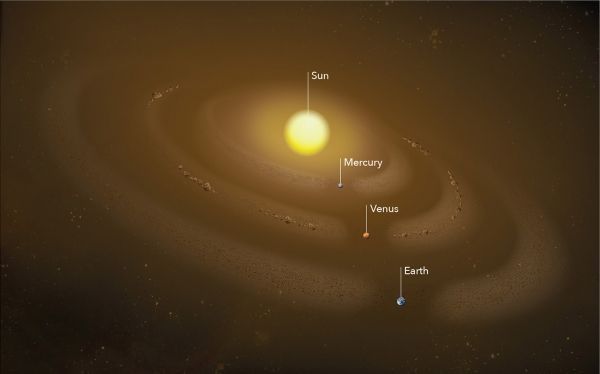Just as dust gathers in corners and along bookshelves in our homes, dust piles up in space too. But when the dust settles in the solar system, it’s often in rings. Several dust rings circle the Sun. The rings trace the orbits of planets, whose gravity tugs dust into place around the Sun, as it drifts by on its way to the center of the solar system.
The dust consists of crushed-up remains from the formation of the solar system, some 4.6 billion years ago — rubble from asteroid collisions or crumbs from blazing comets. Dust is dispersed throughout the entire solar system, but it collects at grainy rings overlying the orbits of Earth and Venus, rings that can be seen with telescopes on Earth. By studying this dust — what it’s made of, where it comes from, and how it moves through space — scientists seek clues to understanding the birth of planets and the composition of all that we see in the solar system.
Two recent studies report new discoveries of dust rings in the inner solar system. One study uses NASA data to outline evidence for a dust ring around the Sun at Mercury’s orbit. A second study from NASA identifies the likely source of the dust ring at Venus’ orbit: a group of never-before-detected asteroids co-orbiting with the planet.
Read more at NASA
Image: In this illustration, several dust rings circle the Sun. These rings form when planets’ gravities tug dust grains into orbit around the Sun. Recently, scientists have detected a dust ring at Mercury’s orbit. Others hypothesize the source of Venus’ dust ring is a group of never-before-detected co-orbital asteroids. CREDITS: NASA’s Goddard Space Flight Center / Mary Pat Hrybyk-Keith


